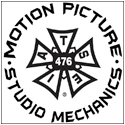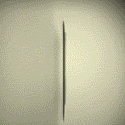
Years in the making,
the “snappy, engaging,
and punchy” story told
“through the voices
of fifty people”
unfolds with
singular clarity
Part of the glory about Ky Dickens’ new film, The City That Sold America, is that we’ve seen it all before.
Beginning with Ronald McDonald, Charlie Tuna, Tony the Tiger, and countless other mascots mentioned from the get-go, the history of advertising in Chicago plays like a visit with cozy but powerful old friends.

“Everywhere we look, Chicago’s imprint is on the world,” says Dickens, who co-wrote the script with Emmy Award-winning producer, Mary Warlick. “Big imagery, coupons, niche marketing, product placement: it all started here.”
Once the acquaintances are reestablished, the film moves on to the legends behind them.
There’s Albert Lasker, a Texan who relocated to Chicago and became known as the “father of modern advertising.” There’s Leo Burnett, who turned his beloved “critter factory” into a corporate empire that influences millions of consumers around the globe. And of course Tom Burrell, a leader who “brought Black families into the living rooms of mainstream America.”
“I really wanted to tell the story of agency and advertising trends that came out of Chicago,” Dickens continues.
THE CITY THAT SOLD AMERICA TRAILER
The story unfolds at a lively pace, thanks to the “snappy, engaging, and punchy” style that Dickens designed to play like a commercial. It comes alive through visuals that combine interviews with footage of commercials, vintage illustrations, historic photographs, and compelling graphic design.
Splendid examples of relevant bygone achievements pop up along the way: Chicago was home to a mail order empire, a gambling mecca, and an entertainment industry long before Amazon, Las Vegas, and Hollywood were a thing.

Current reminders of ongoing influence punctuate the tale. “Most people don’t know the Ten Commandments,” explains DDB Worldwide Chairman Emeritus Keith Reinhard. “But everyone knows the ingredients of the Big Mac.”
Each of the film’s chapters are separated by close-up shots of the corresponding storyboard panel getting touched up with a pencil, fingers and all.
Dickens and Warlick planned The City That Sold America as a follow-up to the 2009 Emmy Award-winning, Art & Copy, a documentary about “advertising and inspiration” directed by Doug Pray and produced by Warlick.
Since the Chicago advertising industry evolved along with — and often because of — the city’s expansion, the pair also tells the story of modern-day Chicago, a town that author Thomas Dyja describes in the film as, “the first great city created just by Americans.”
“The voices of fifty people”
Besides supporting the boast with an abundance of evidence, the film’s story is remarkable for its unique presentation. Told “through the voices of fifty people,” the facts, opinions, and details come through with singular clarity.

To get it done, Dickens, Warlick, and Editor Michael Barry overcame a challenge that confronted them all the way from pre-production to post.
But the director would have it no other way.
“It was important to source those interviews into an effective narrative,” she explains. “The city is this city because of the diverse perspectives of the people who live here. The narrator had to be a combination of voices.”
Behind the scenes
Dickens interviewed dozens of industry veterans, thought leaders, historians, academics, tastemakers, authors, and museum directors. Armed with a small crew and a pair of cameras, she captured them in the offices, schools, and institutions where they work.
The shoots often required her to configure sets and lighting on the fly, a skill that she has honed over the course of four award-winning features.

“That’s the fun of documentary filmmaking,” she says. “You don’t have the luxury of choosing where you can shoot, so you have to be problem solving all the time to make it work.”
Before the cameras rolled, she made herself “an expert on all the subjects we were discussing” with help from “a lot of books.” When the action began, she “would tailor each interview to address a specific part or narrative of the film.”
The resulting material was compiled into a customized Filemaker Pro database and sorted into categories like “date, agency, campaign, and source.”
“I took every single interview that we did and created an outline, and then I created a paper script from the interviews that indicated how the film should flow,” she explains. “I listed all of the quotes and the timecode in the right-hand column, and in the left-hand column was the archival information that we needed to see.”
World Premiere
Although Dickens admits that, “there are a ton of stones left unturned,” The City That Sold America examined enough of them to confirm that Chicago should be proud of its advertising legacy.

Presented with thrilling grace, viewers are likely to agree with the assertion, regardless of where they live or what they do for a living.
The director, who was born and raised in the city before moving out to Los Angeles, needs no convincing. “I’ve always known that Chicago is exceptional,” she says.
“The City That Sold America premieres at the Chicago International Film Festival on Thursday October 11 and screens again on Saturday October 13. For more information, click here.

















